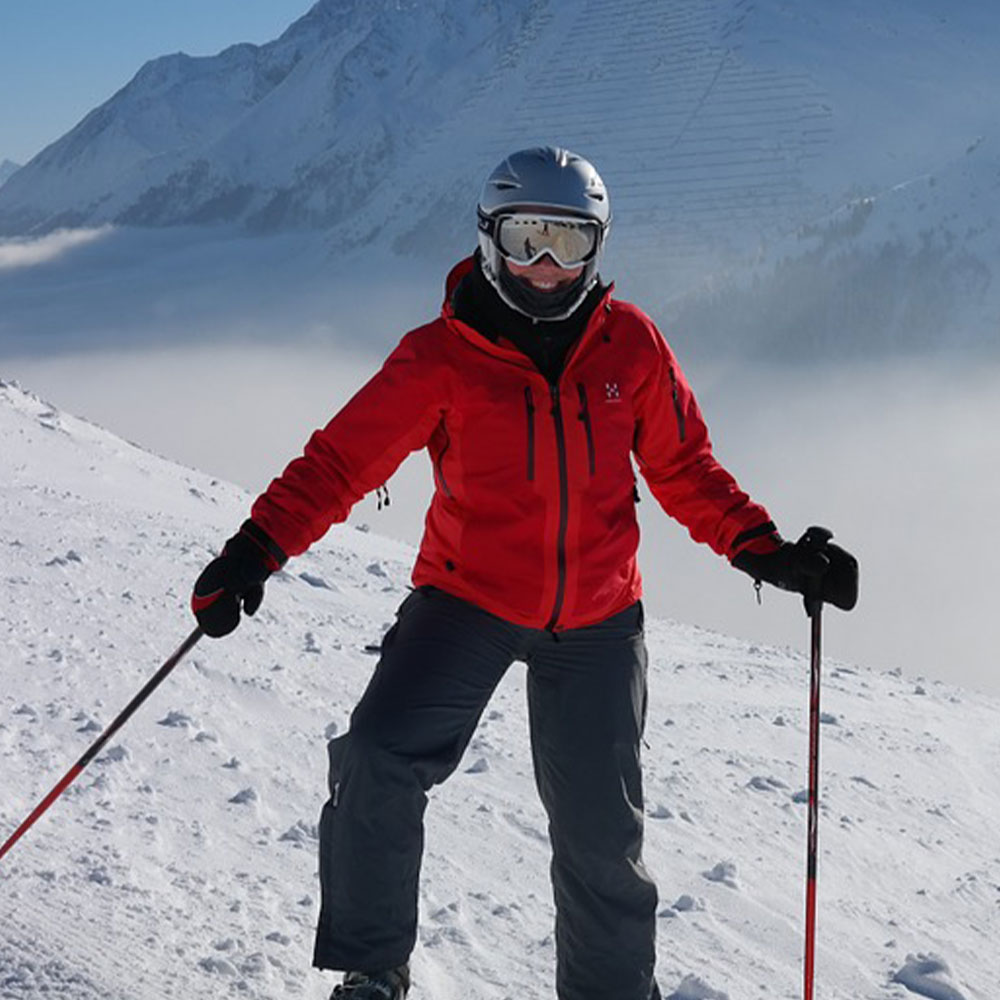Learn Smarter Group Communication Tricks For The Trail
Author

A keen runner, skier and nuts about cycling. Karl lives in Cumbria, where he loves encouraging his two children to follow in his outdoor lifestyle. Whilst out and about keeping active, Karl keeps a diary and shares it with Outdoor Look.
 Communication is integral to building a connection and understanding in any relationship. While traveling, a lot of our time goes away on singing melodies, cracking jokes, citing anecdotes from previous journeys and so on. Of course, traveling the trail isn’t an easy task, as it is physically and mentally demanding to hike up the hills.
Communication is integral to building a connection and understanding in any relationship. While traveling, a lot of our time goes away on singing melodies, cracking jokes, citing anecdotes from previous journeys and so on. Of course, traveling the trail isn’t an easy task, as it is physically and mentally demanding to hike up the hills.
We meet different kinds of people in a group with different perspectives and personalities of each person. It is a given fact that we might gel well with some, while there might be some conflicting opinions with a few in the group. Despite these challenges, group communication can be made easier for you with 5 helpful tips to enjoy light-hearted conversations and adventures with everyone.
1. Maintain a cooperative tone from the outset
Traveling in a large group with lots of new faces and unknown people means there is huge scope of breaking walls of ice during short breaks in the journey. Carefully, read through your itinerary and analyze the number of breaks you’ll get, and the speed and pace of the journey. Discussing your plans with the group will allow each one to share their traveling charts with you which puts you all on a similar pedestal.
2. Switch Leaders Often
Ideally, the leader should be someone who has a great amount of knowledge about the place you're walking in and its culture, and is a good observer, capable of spotting wildlife and other interesting sights or hazards. With a leader like this, it becomes easier to navigate and absorb the local culture, but others should be allowed to cycle into the leadership role every now and then, as this will go a long way towards developing effective communication skills and seeing different perspectives on the location.
3. Follow “CFOR” rule to handle conflicts
 Understanding CFOR helps a great deal in managing conflicts and communication. This term is frequently taught during Outward Bound courses.
Understanding CFOR helps a great deal in managing conflicts and communication. This term is frequently taught during Outward Bound courses.
Concern: What is it, precisely, that you are upset about?
Feeling: How did this make you feel about the situation?
Ownership: What part of this situation can you take ownership of?
Request: What requests can you issue that would enable you to start moving past this?
No matter what the situation is, you can follow the CFOR rule and it will clarify the bone of contention as well as produce some solutions which should improve the disturbance.
4. Ask often about how’re they doing
Use short breaks to talk to the people around and know about their emotional and physical health. Nothing better than just walking up to them and asking, hey! Hope everything is going well with all of you. Pray tell, how is everybody feeling on this trip?
5. Assess the highs and lows of the trip
The secret route to learning lessons from your journey is to learn from yours and others' mistakes and accomplishments. Towards the end of the trip when we’re off to our homes, I always provide a closure to the trip by discussing the high points and low stages of the journey, to analyze where we went wrong to ensure a positive outcome in the future.
Author

A keen runner, skier and nuts about cycling. Karl lives in Cumbria, where he loves encouraging his two children to follow in his outdoor lifestyle. Whilst out and about keeping active, Karl keeps a diary and shares it with Outdoor Look.
Categories
- Sport (28)
- Product Reviews (3)
- Team Outdoor Look (7)
- Mike Wild (2)
- Mike Payton (2)
- Suse Hammond-Pears (3)
- Snowboarding (12)
- Latest Offers (105)
- Shop Talk (1)
- Competitions (7)
- Walking (413)
- Lifestyle Fashion (8)
- Travel (86)
- Kit Guides (176)
- Workwear Clothing (6)
- Safety Workwear (4)
- Health/Fitness (289)
- Skiing (91)
- Great Outdoors (1316)
- Cycling (92)
- January 2025
- December 2024
- November 2024
- October 2024
- September 2024
- August 2024
- July 2024
- June 2024
- May 2024
- April 2024
- March 2024
- February 2024
- January 2024
- December 2023
- November 2023
- October 2023
- September 2023
- August 2023
- July 2023
- June 2023
- May 2023
- April 2023
- March 2023
- February 2023
- January 2023
- December 2022
- November 2022
- October 2022
- September 2022
- August 2022
- July 2022
- June 2022
- May 2022
- April 2022
- March 2022
- February 2022
- January 2022
- December 2021
- November 2021
- October 2021
- September 2021
- August 2021
- July 2021
- June 2021
- May 2021
- April 2021
- March 2021
- February 2021
- January 2021
- December 2020
- November 2020
- October 2020
- September 2020
- August 2020
- July 2020
- June 2020
- May 2020
- April 2020
- March 2020
- February 2020
- January 2020
- December 2019
- November 2019
- October 2019
- September 2019
- August 2019
- July 2019
- June 2019
- May 2019
- April 2019
- March 2019
- February 2019
- January 2019
- December 2018
- November 2018
- October 2018
- September 2018
- August 2018
- July 2018
- June 2018
- May 2018
- April 2018
- March 2018
- February 2018
- January 2018
- December 2017
- November 2017
- October 2017
- September 2017
- August 2017
- July 2017
- June 2017
- May 2017
- April 2017
- March 2017
- February 2017
- January 2017
- December 2016
- November 2016
- October 2016
- September 2016
- August 2016
- July 2016
- June 2016
- May 2016
- April 2016
- March 2016
- February 2016
- January 2016
- December 2015
- November 2015
- October 2015
- September 2015
- August 2015
- July 2015
- June 2015
- May 2015
- April 2015
- March 2015
- February 2015
- January 2015
- December 2014
- November 2014
- October 2014
- September 2014
- August 2014
- July 2014
- June 2014
- May 2014
- April 2014
- March 2014
- February 2014
- January 2014
- December 2013
- November 2013
- October 2013
- September 2013
- August 2013
- July 2013
- June 2013
- May 2013
- April 2013
- March 2013
- February 2013
- January 2013
- December 2012
- November 2012
- October 2012
- September 2012
- August 2012
- July 2012
- June 2012
- May 2012
- April 2012
- March 2012
- February 2012
- January 2012
- December 2011
- November 2011
- October 2011
- September 2011
- August 2011
- May 2010
- April 2010
- March 2010
- February 2010
- January 2010
- November 2009
- October 2009
- September 2009
Submit a Comment